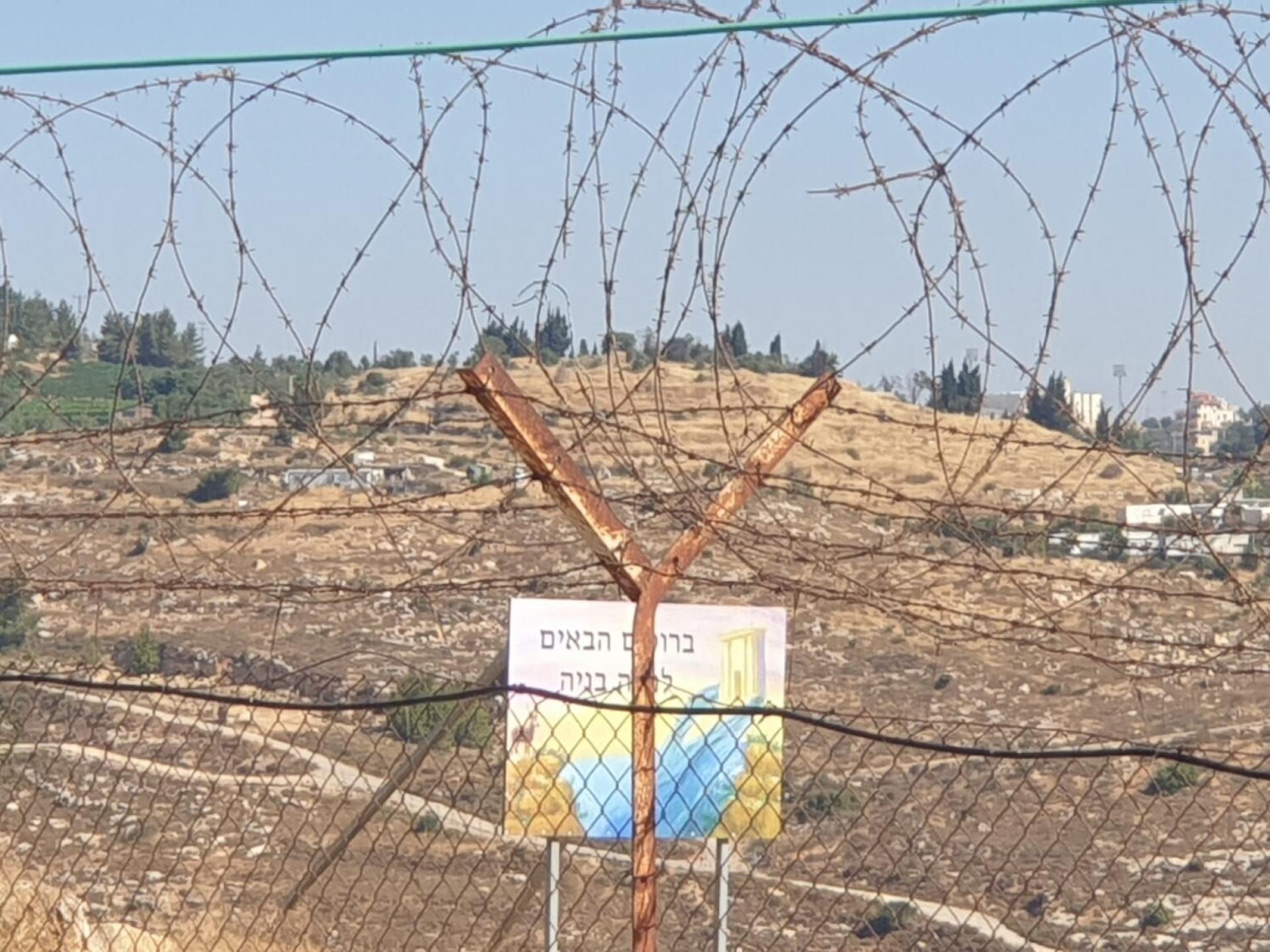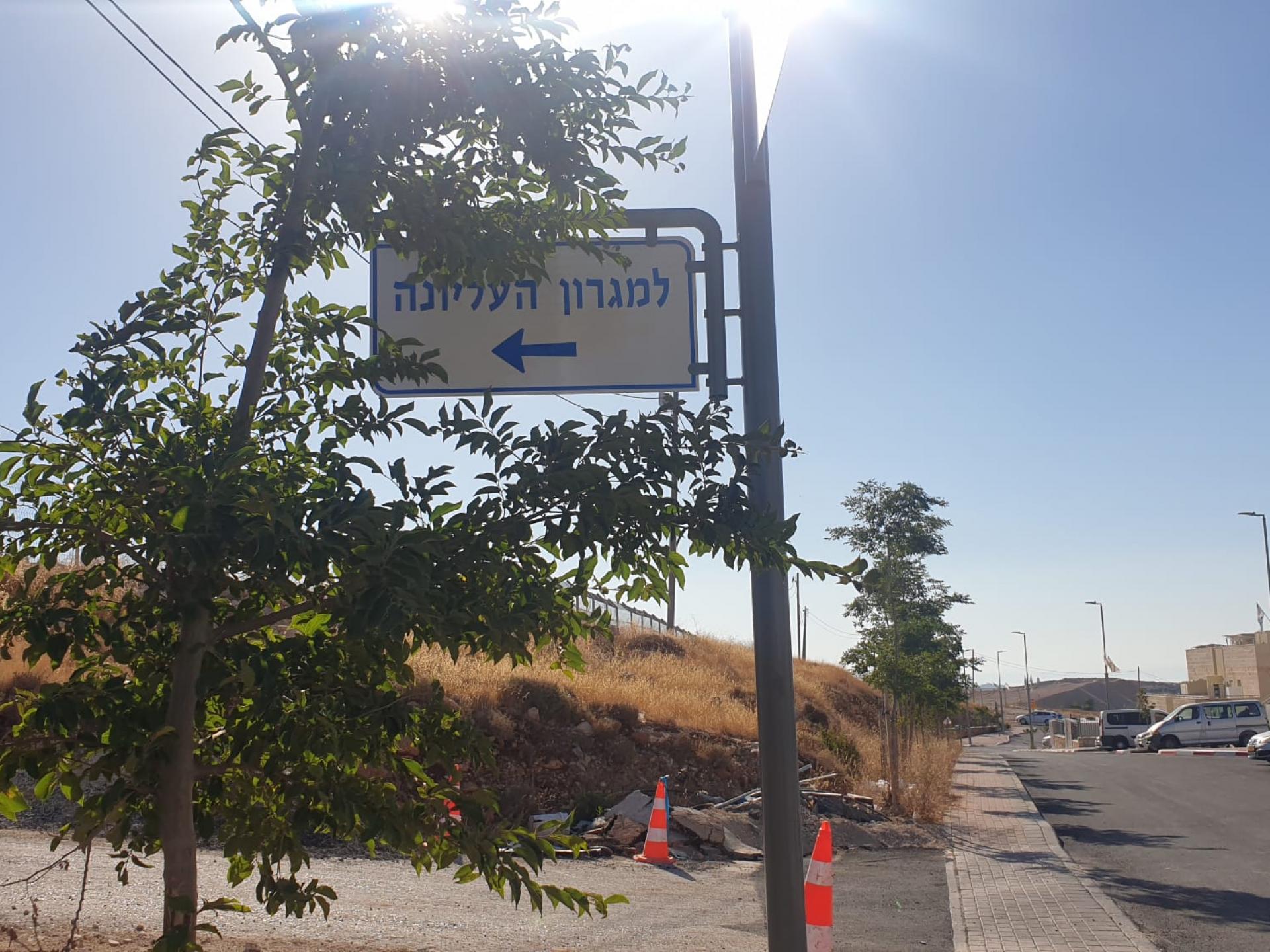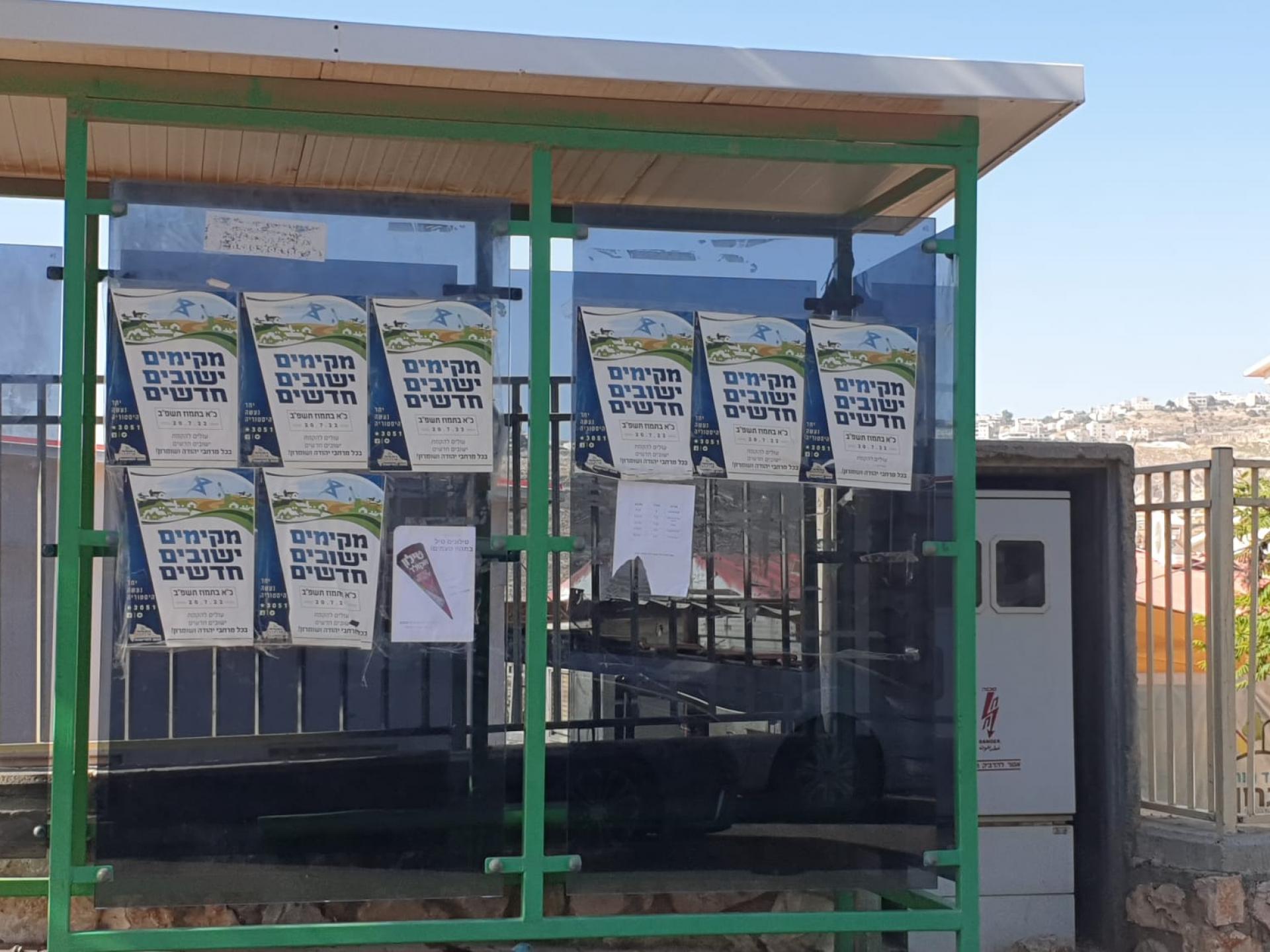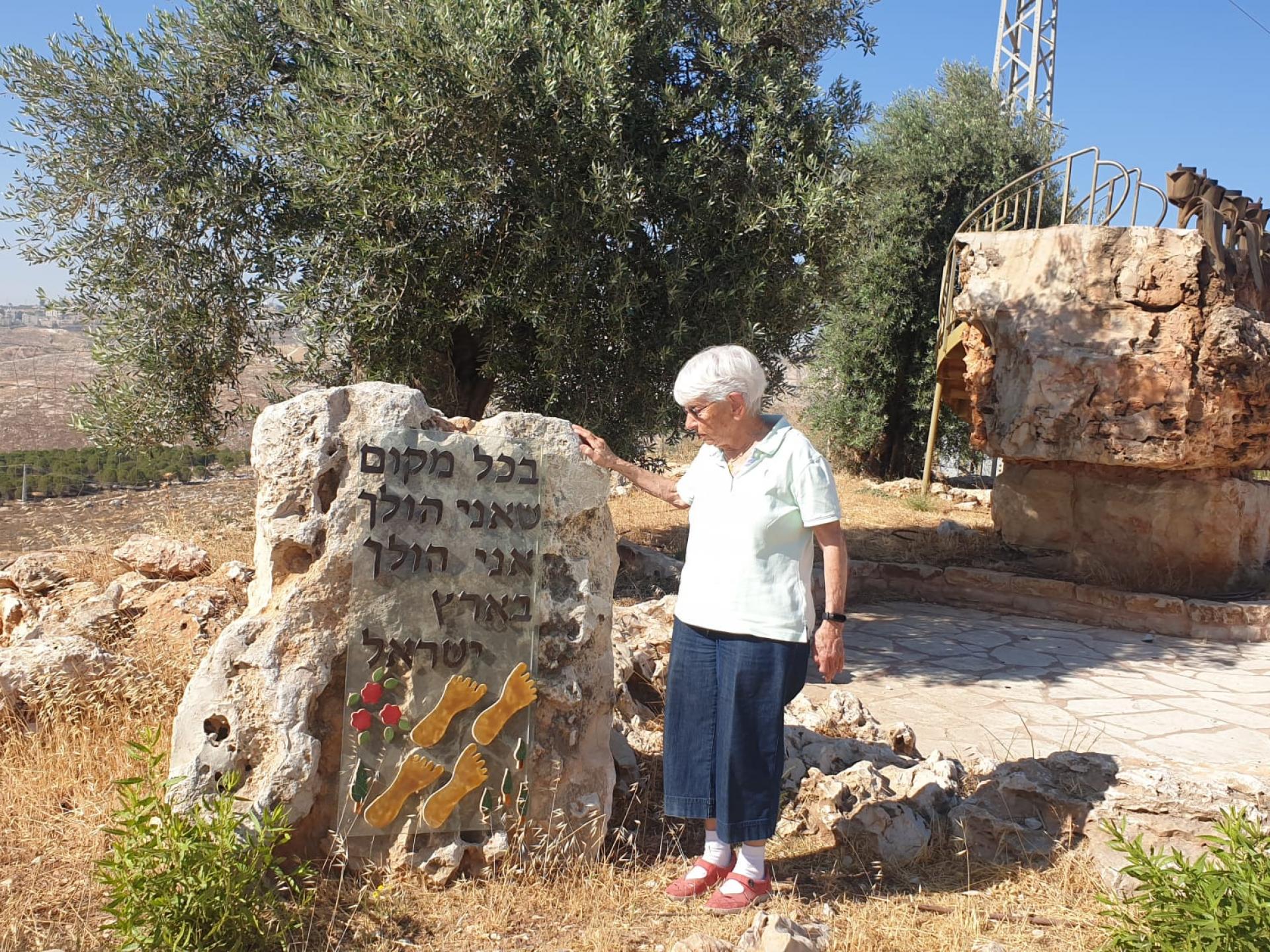New Hizma checkpoint, Migron, Kochav Yair, Neve Banaya outpostווה בניה
We drove this time to the northern portion of Jerusalem to examine new checkpoints, road re-routings and what’s been happening in the settlements of the Sha’ar Binyamin region. There have been developments; we viewed a magnificent landscape, the Kharta evacuees, and felt very anxious in anticipation of the messianic settler revolt involving new West Bank construction on July 20, 2022.
Jerusalem sits amid traffic jams, which we also joined… On the way to the Hizma vehicle checkpoint Chana pointed out a small mixed neighborhood of Palestinians with blue Israeli ID cards, and Israelis, in southwest Pisgat Ze’ev. But apparently no one rents to Palestinians these days (we’d be happy to hear from someone who knows the facts). Traffic moved freely at Hizma checkpoint, with no delays for vehicles coming from the Shomron. There’s a traffic jam in the direction of Jerusalem.
We turned east onto Highway 437 and saw a new checkpoint in the southeastern portion of Hizma that prevents village vehicles from entering or leaving the road to Anata, to Jerusalem and to Ma’aleh Adumim. We spoke with a student from Al-Quds University, a nurse in the Anata Kupat Holim and other workers hurrying to cross the busy highway to catch a ride and reach their destination. They said two weeks ago soldiers shut down the checkpoint completely, and blocked with boulders any alternate route to the highway the residents tried to create in order to avoid a long detour. Why? Perhaps in order to ease the setters’ travel on this road, and perhaps simply to make life harder for Palestinians.
We continued northward, passing Jaba on the left (west) and the Sha’ar Binyamin industrial zone on our right (east). It was established to encourage joint Israeli-Palestinian employment opportunities. The street signs are in Hebrew, the businesses belong to Israelis, the workers seem mostly to be Palestinian. The Rami Levy firm is sovereign here.
We turned off to Migron, which had been moved to a new location nearby; the map identifies it as Giv’at Hayekev. But no one’s misled, and “Migron” is written everywhere. A great deal of single-family home construction and public buildings, perhaps some in accord with the plan approved following the removal in 2017 (the land belongs to Palestinians but the settlers had argued in court they’d purchased it and Migron’s vacated land while the trial was underway). We climb up – and an official sign directs us: Upper Migron. The gate is closed, there’s a notice to contact one’s hosts so they will open it. Upper Migron is visible from a distance, trees on the hills and a few temporary structures/trailers on the slopes. We suddenly realize that’s the hill where the evacuated Migron was located, where a growing outpost has once again been established! In other words, it’s all bluff… A bus stop at the exit covered with posters encouraging people to join the “Stockade and Tower July 2022” settlement operation. Family tours will be offered to all the planned sites…
We drive west toward Psagot and Al-Bire and reach Kochav Ya’akov. According to Google Maps the settlement contains 10,000 religious inhabitants, including a separate ultra-orthodox neighborhood. (What’s interesting is that according to Google the settlement was established in 1984 by descendants of Jews from Arab countries who weren’t accepted by other settlements being established). We see at the entrance to Kochav Ya’akov an unpaved road to an extensive farm/homestead. The religious/ideological basis of the settlement is engraved on two boulders: the entire land of Israel is intended only for the people of Israel (see photos). An older religious man comes toward us, very suspicious, wants only for us to leave quickly. We really couldn’t understand how he, a settler, could be afraid of anyone. Hagit Ofran, from Peace Now, says he commandeered a large Palestinian building ten years ago that he’d renovated and expanded, and lives there without approval from anyone. Apparently, that’s why he’s suspicious.
Hagit asks us to ascend to see whether the Amana group has already begun preparing at Neve Banaya, which is included in the list of planned outposts to be established during the settlement operation in approximately three weeks. According to Wikipedia, its first actual endeavor is to construct a walkway connecting the locality with nearby Psagot. The outpost already has a “Welcome” sign that we photographed, a gate and locked parking area for Palestinian vehicles (only cars of Kochav Ya’akov workers, or also those preparing the infrastructure for the new outpost?). The planned outpost has the nerve, which is typical, to already appear in the Waze traffic app! Even though Hanna climbed on the emplacement beside the locked gate, and we tried to observe from various locations, both high and low, to see whether construction had begun – we weren’t able to see what’s going on in the fenced area.






